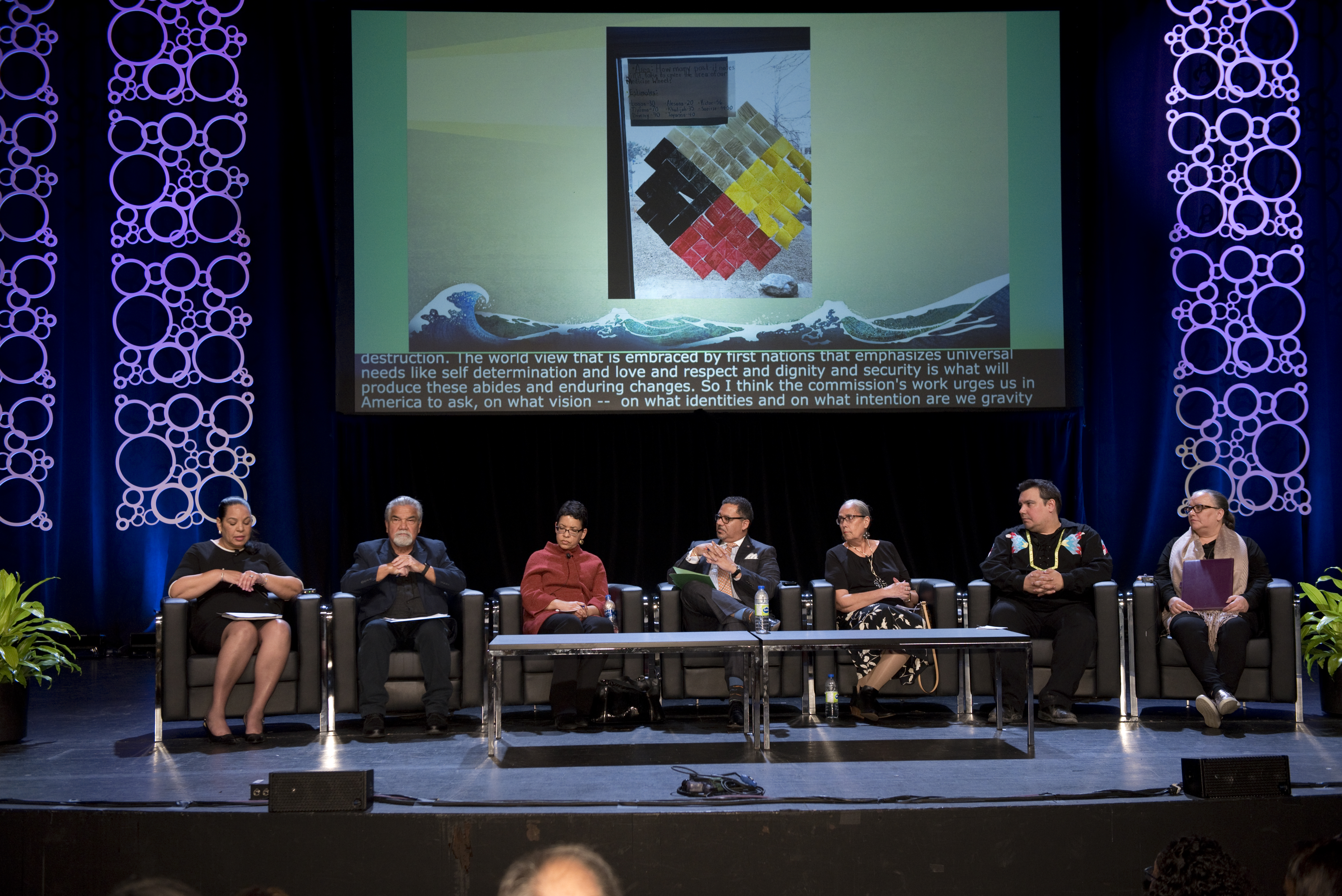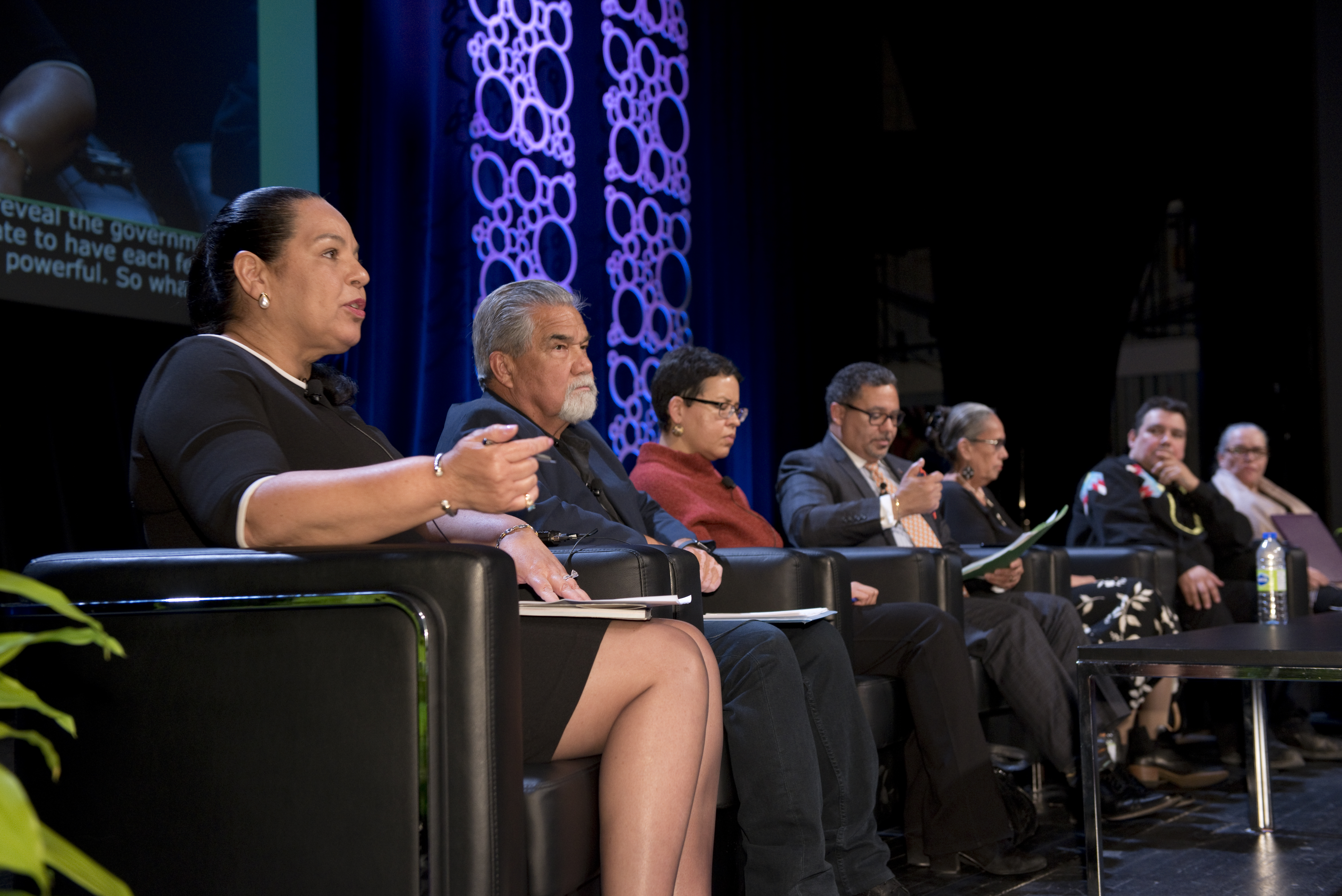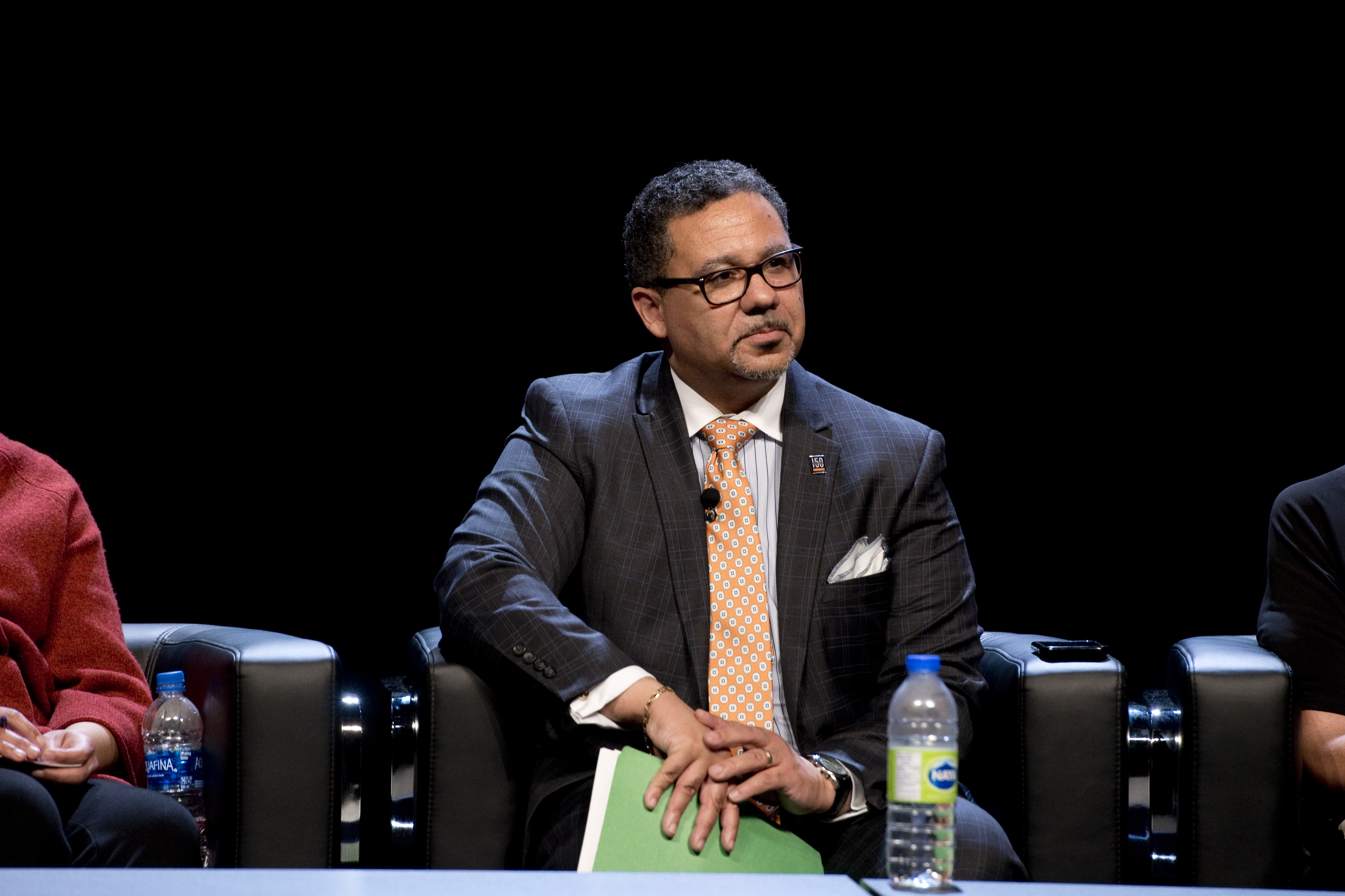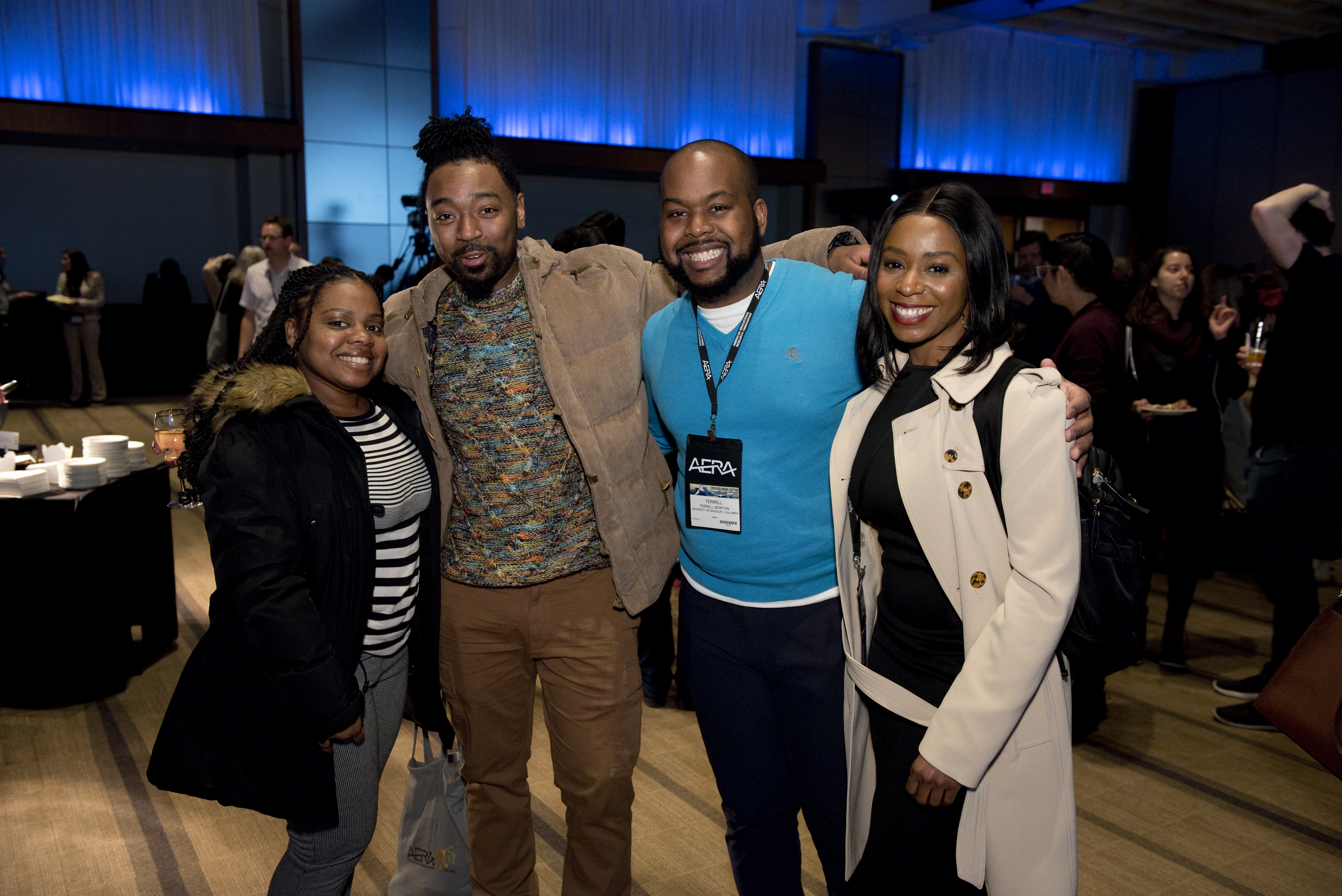April 2019
|

Opening Plenary Participants (Left to Right):
Leslie T. Fenwick, Daniel Gilbert Solorzano,
Elise C. Boddie, Christopher M. Span,
Sandy White Hawk, Niigaanwewidam
James Sinclair, and Tanya Senk.
|
The 2019 Annual Meeting’s Opening Plenary session, “Truth and Reconciliation in Education: History, Narratives, and Pedagogy,” addressed the meaning of truth and reconciliation in the field of education and the power of educational institutions to both inflict and heal racial injustices.
The Opening Plenary focused on the work of the Canadian Truth and Reconciliation Commission (TRC) and its landmark 2015 report. Part of a settlement with the Canadian government, the report details state-sponsored harm done to Indigenous nations and examines the role of the government-funded Aboriginal residential schools in family separation and cultural genocide.
Until the 1990s, when the last such residential school was closed, Indigenous children were removed from their homes and communities to be “civilized” in those schools. The Truth and Reconciliation Commission’s work of educating the Canadian people about the harsh truth of their history led to efforts to reconcile, including recommendations to implement important educational reforms in Canada.
|

Opening Plenary Participants (Left to Right):
Leslie T. Fenwick, Daniel Gilbert Solorzano,
Elise C. Boddie, Christopher M. Span,
Sandy White Hawk, Niigaanwewidam
James Sinclair, and Tanya Senk.
|
The panel featured accomplished scholars and educators from the U.S. and Canada Including Elise C. Boddie (Rutgers University), Leslie T. Fenwick (Howard University), Tanya Senk (Urban Indigenous Education Centre, Toronto District School Board), Niigaanwewidam James Sinclair (University of Manitoba), Daniel Gilbert Solorzano (University of California, Los Angeles), and Sandy White Hawk (Maine Wabenaki Truth and Reconciliation Commission).
Christopher M. Span (University of Illinois at Urbana-Champaign), a member of AERA Council and Vice President of AERA Division F, chaired the panel and moderated the discussion.
In their comments, Senk and Sinclair provided background on the history, formation, and purposes of the Commission. “The TRC was not a guilt-finding mission; it was a truth finding mission,” said Sinclair. “It was telling the survivors: We believe you.”
“I think that Indigenous peoples have been researched over and over again,” added Senk. “I think having Indigenous research led by Indigenous peoples within communities that is based on a reciprocal relationship is ongoing and sustainable.”
Panelists also discussed how the TRC relates to racial reconciliation issues in the United States. “There is no truth in the United States as far as I am concerned with respect to the African American experience,” added Boddie. “I can’t even wrap my mind around healing because the wounds are so raw and fresh and we haven’t grappled with the fact that the systems we have that took 400 years continue to adapt.”
“The Commission’s work urges us in America to ask on what vision, identities, and intentions are we grafting truth and reconciliation,” said Fenwick. “Are we grafting our efforts in the United States or Canada onto the absolution of White guilt, or are we grafting onto an abiding commitment to love, peace, respect, self-determination, and dignity?”
|

Christopher M. Span
|
Similarly, Span added, “We must be intentional in everything we do. If we can be intentional in our mode of communication and have the history of humanity in our pockets, then we have to be as intentional in our efforts to provide redress.”
White Hawk discussed dealing with reconciliation on a personal level, stating: “Truth is explaining what happened; healing comes once there’s acknowledgment, encouragement, and exchange. No reconciliation will happen without healing.”
White Hawk also added: “Saying what happened to us is not the hard part. Our people have said what happened to them for generations, and have not been believed; they have been dismissed and marginalized. That is the hard part.”
|

AERA members greet one another at the
welcome reception
|
At the conclusion of the event, AERA Executive Director Felice J. Levine came to the stage to thank the participants. “This was an epiphany moment I think for all of us,” said Levine. “The joining of this family that you co-created so much captures how we have to deal with the pernicious victimization that has pervaded the lives of Indigenous populations throughout our world.”
Following the Opening Plenary, attendees joined a welcome reception in a packed ballroom to enjoy the opportunity to network with and meet their colleagues.